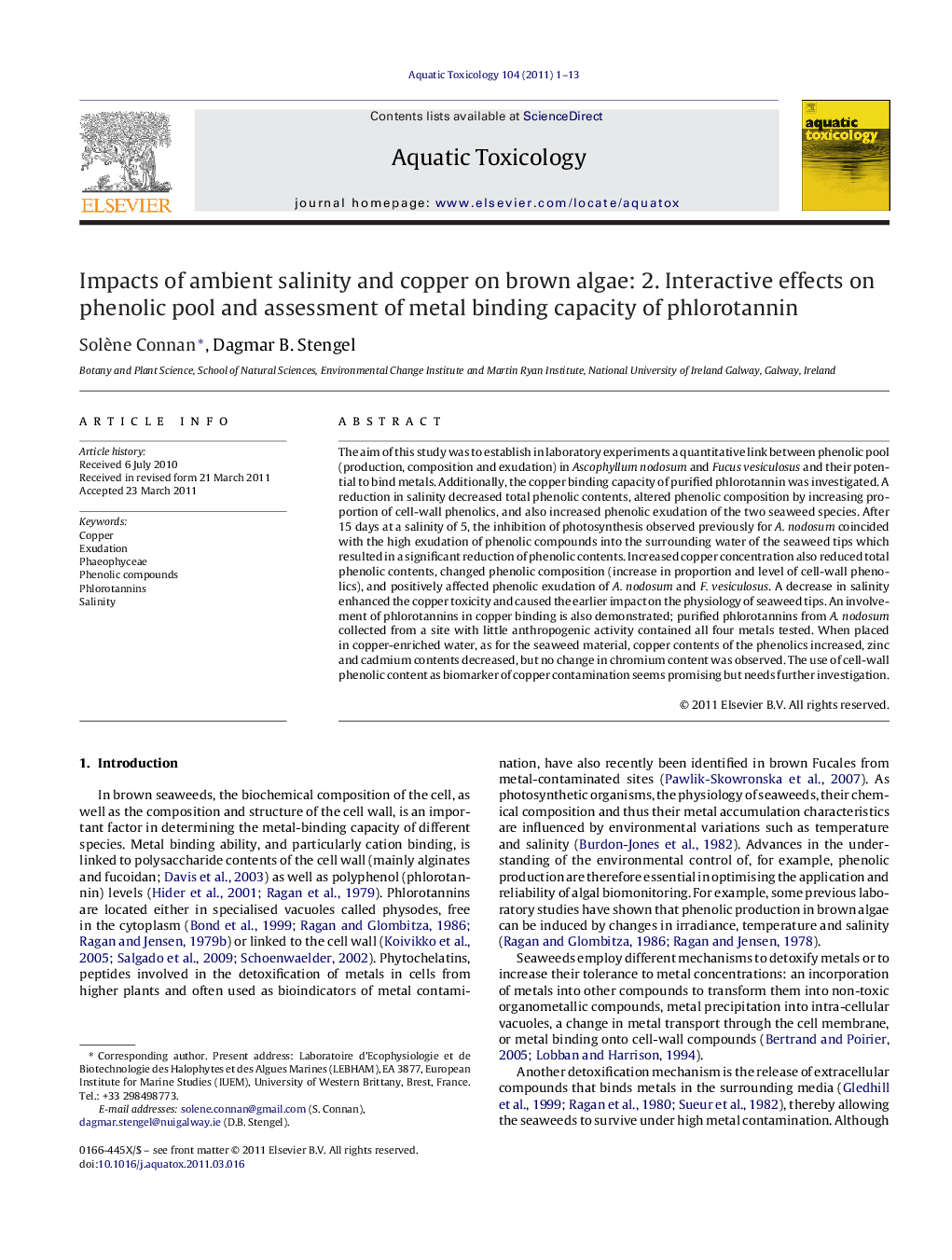| کد مقاله | کد نشریه | سال انتشار | مقاله انگلیسی | نسخه تمام متن |
|---|---|---|---|---|
| 4529883 | 1625986 | 2011 | 13 صفحه PDF | دانلود رایگان |

The aim of this study was to establish in laboratory experiments a quantitative link between phenolic pool (production, composition and exudation) in Ascophyllum nodosum and Fucus vesiculosus and their potential to bind metals. Additionally, the copper binding capacity of purified phlorotannin was investigated. A reduction in salinity decreased total phenolic contents, altered phenolic composition by increasing proportion of cell-wall phenolics, and also increased phenolic exudation of the two seaweed species. After 15 days at a salinity of 5, the inhibition of photosynthesis observed previously for A. nodosum coincided with the high exudation of phenolic compounds into the surrounding water of the seaweed tips which resulted in a significant reduction of phenolic contents. Increased copper concentration also reduced total phenolic contents, changed phenolic composition (increase in proportion and level of cell-wall phenolics), and positively affected phenolic exudation of A. nodosum and F. vesiculosus. A decrease in salinity enhanced the copper toxicity and caused the earlier impact on the physiology of seaweed tips. An involvement of phlorotannins in copper binding is also demonstrated; purified phlorotannins from A. nodosum collected from a site with little anthropogenic activity contained all four metals tested. When placed in copper-enriched water, as for the seaweed material, copper contents of the phenolics increased, zinc and cadmium contents decreased, but no change in chromium content was observed. The use of cell-wall phenolic content as biomarker of copper contamination seems promising but needs further investigation.
Journal: Aquatic Toxicology - Volume 104, Issues 1–2, July 2011, Pages 1–13